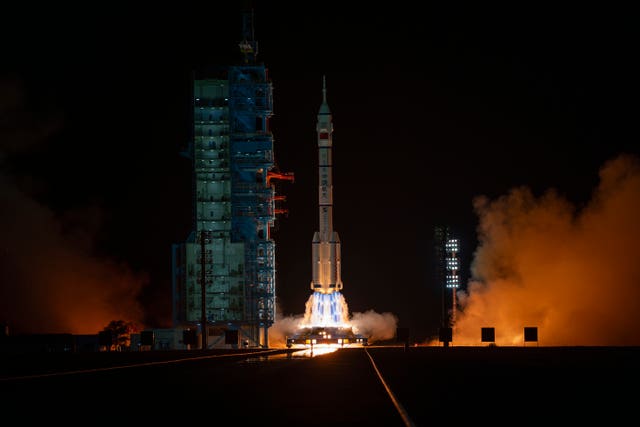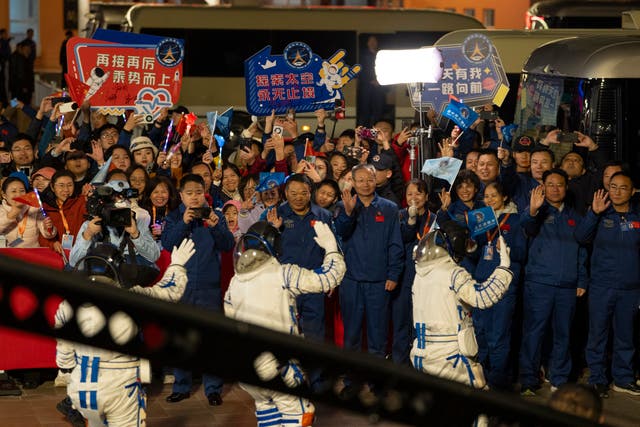China launches new crew to its space station as it seeks to expand exploration
China’s Moon programme is part of a growing rivalry with the US and others, including Japan and India.

China has launched a new three-person crew to its orbiting space station as the country seeks to expand its exploration of outer space with missions to the Moon and beyond.
China built its own space station after being excluded from the International Space Station, mainly because of US concerns over the People’s Liberation Army, the Chinese Communist Party’s military arm’s overall control over the space programme.
China’s Moon programme is part of a growing rivalry with the US and others, including Japan and India.

They are expected to stay until April or May of next year.
The new mission commander, Cai Xuzhe, went to space in the Shenzhou-14 mission in 2022, while the other two, Song Lingdong and Wang Haoze, are first-time space travellers, born in the 1990s.
Song was an air force pilot and Wang an engineer with the China Aerospace Science and Technology Corporation.
Wang will be the crew’s payload specialist and the third Chinese woman aboard a crewed mission.
The Shenzhou-19 spaceship carrying the trio blasted off from the Jiuquan Satellite Launch Centre in northwest China at 4.27am local time atop a Long March-2F rocket, the backbone of China’s crewed space missions.
Besides putting a space station into orbit, the Chinese space agency has landed an explorer on Mars.
It aims to put a person on the Moon before 2030, which would make China the second nation after the United States to do so.

The US still leads in space exploration and plans to land astronauts on the Moon for the first time in more than 50 years, though Nasa pushed the target date back to 2026 earlier this year.
The new crew will perform spacewalks and install new equipment to protect the station from space debris, some of which was created by China.
According to Nasa, large pieces of debris have been created by “satellite explosions and collisions”.
China’s firing of a rocket to destroy a redundant weather satellite in 2007 and the “accidental collision of American and Russian communications satellites in 2009 greatly increased the amount of large debris in orbit”, it said.
China’s space authorities say they have measures in place in case their astronauts have to return to Earth earlier.
China launched its first crewed mission in 2003, becoming only the third nation to do so after the former Soviet Union and the United States.
The space programme is a source of enormous national pride and a hallmark of China’s technological advances over the past two decades.





